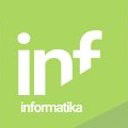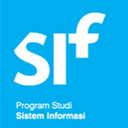
Text
Unmanned Aerial Vehicles and Special Operations: Future Directions
Penilaian
0,0
dari 5Advances in computing, miniaturization, imaging, and data transmission technologies are precursors to a more important role for UAVs in warfare. UAVs are likely, first, to revolutionize the way reconnaissance and surveillance are conducted, second, to increase the capabilities of small units, third, to join manned platforms in the conduct of assault and attack missions, and finally help provide the numerous nodes necessary to facilitate both the digital connectivity and swarming forces envisioned in future networkcentric formations. This book focuses on answering six questions: -What missions can UAVs perform? -What missions should UAVs perform? -What type ofUAV is appropriate for each mission? -How can SOF use UAVs? -Who should own the UAV (from a SOF perspective)? -What level of control is required and where? Results include what UAV missions and types could support special operations, which of these should be performed by UAVs organic to special operations, and which should be performed by the Services' UAVs, as well as recommendations for future command and control of UAVs supporting special operations. Results are presented in matrix form for easy correlation of related factors. The thesis concludes with a twenty-year prognostication of UAV development and recommends areas for future study.
Ketersediaan
| B20170680 | 005.11 u | My Library | Tersedia |
Informasi Detail
- Judul Seri
-
-
- No. Panggil
-
005.11 u
- Penerbit
- USA : CPSIA.,
- Deskripsi Fisik
-
107 hlm.: 29 cm
- Bahasa
-
English
- ISBN/ISSN
-
9781519686879
- Klasifikasi
-
005.11
- Tipe Isi
-
-
- Tipe Media
-
-
- Tipe Pembawa
-
-
- Edisi
-
-
- Subjek
- Info Detail Spesifik
-
-
- Pernyataan Tanggungjawab
-
-
Versi lain/terkait
Tidak tersedia versi lain
Lampiran Berkas
Komentar
Anda harus masuk sebelum memberikan komentar
 Akuntansi
Akuntansi  Arsitektur
Arsitektur  Desain Produk
Desain Produk  Desain Komunikasi Visual
Desain Komunikasi Visual  Informatika
Informatika  Ilmu Komunikasi
Ilmu Komunikasi  Psikologi
Psikologi  Manajemen
Manajemen  Sistem Informasi
Sistem Informasi  Teknik Sipil
Teknik Sipil  Urban
Urban  Kota
Kota